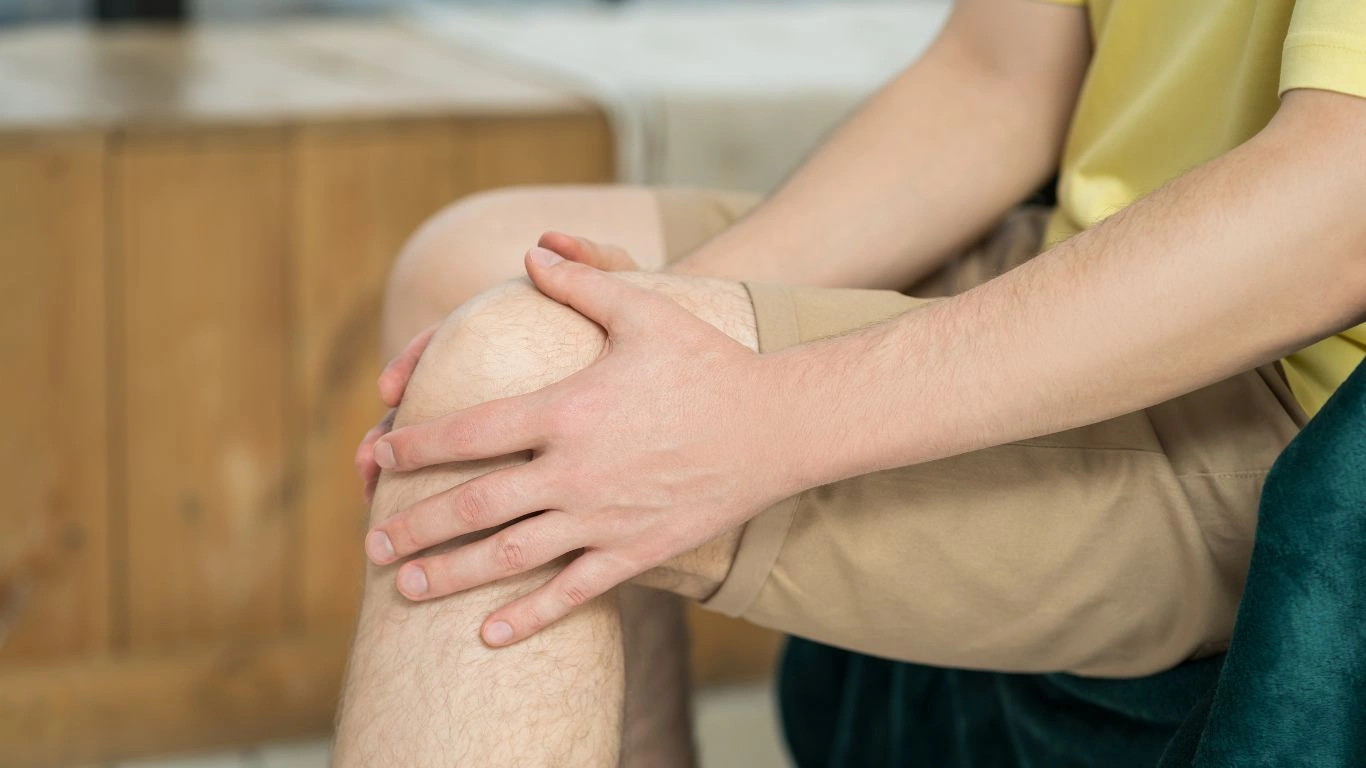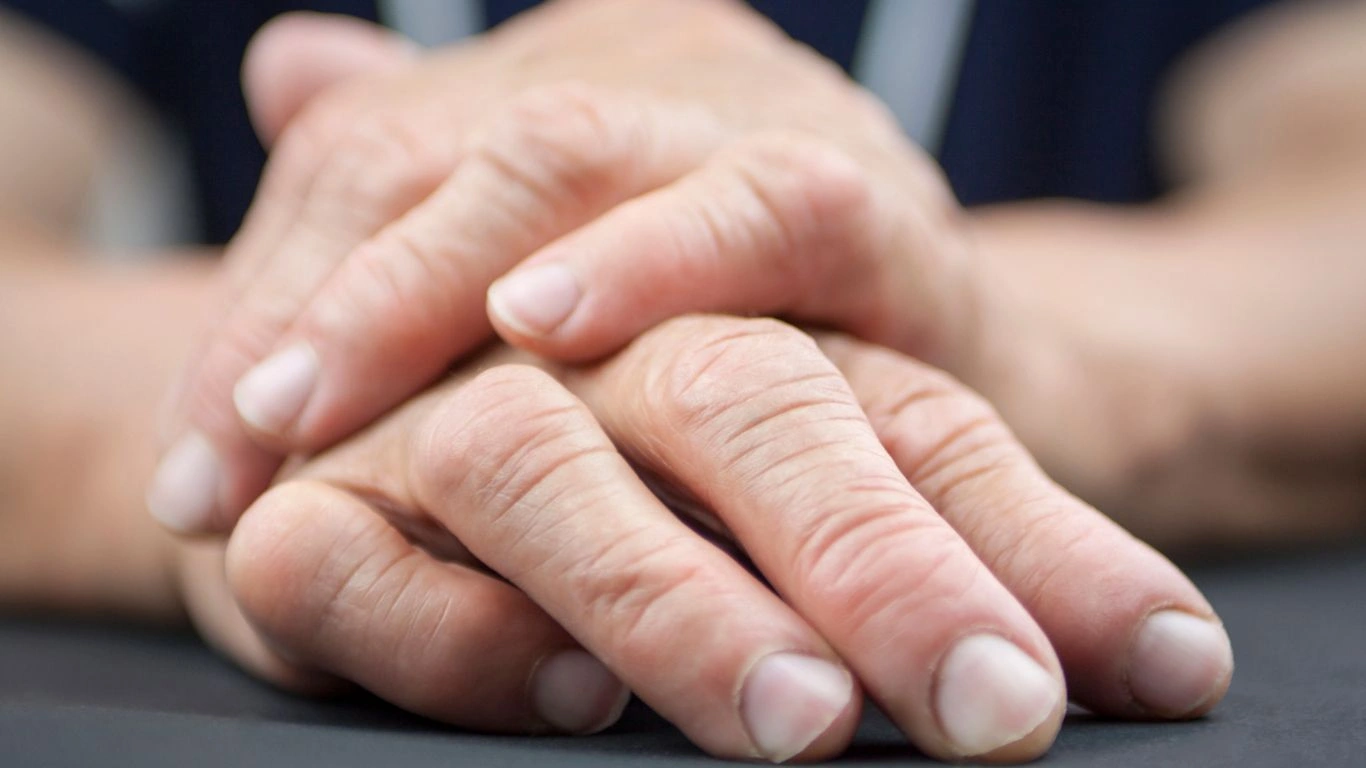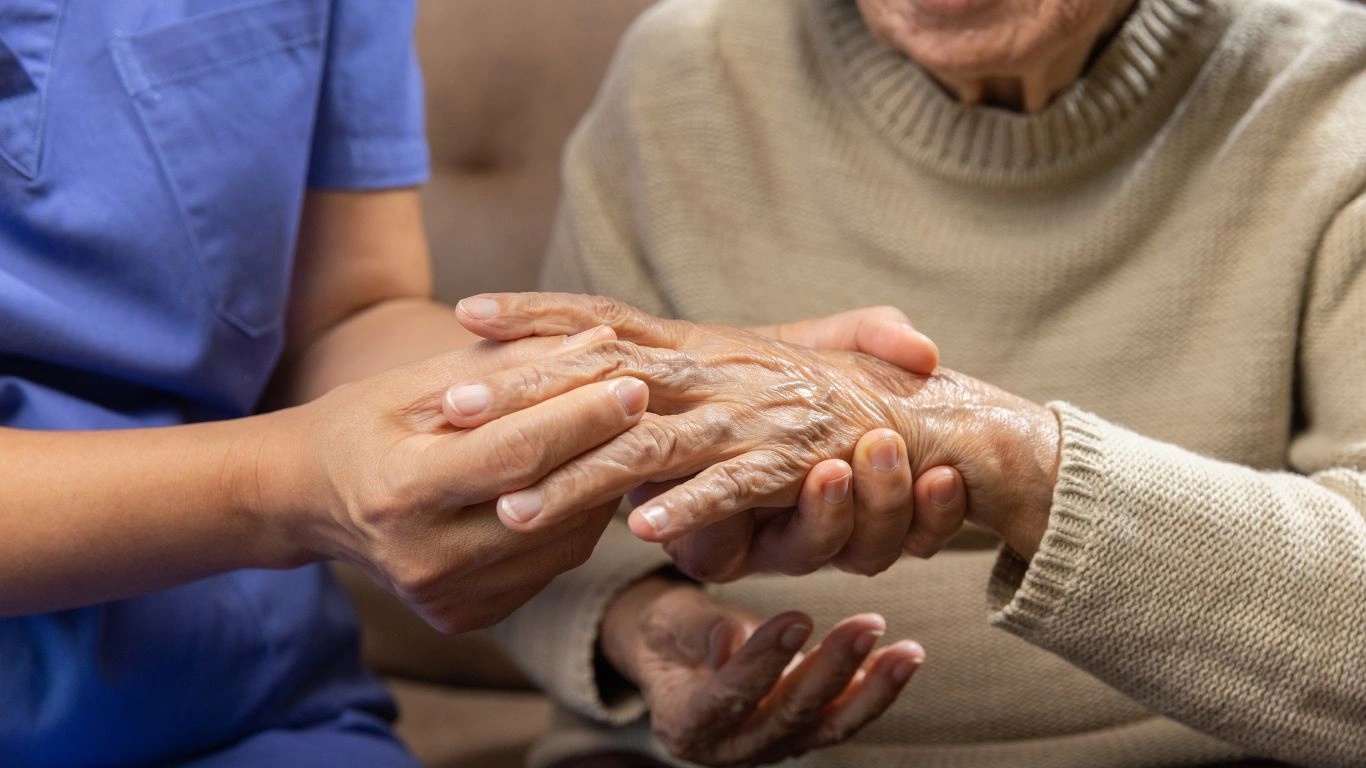How Rheumatoid Arthritis Affects Your Joints Over Time – Shocking Truth!
Rheumatoid arthritis (RA) is a condition that many of us are familiar with, whether personally or through loved ones. It’s a chronic inflammatory disease that primarily affects the joints, leading to pain, swelling, and stiffness. But how exactly does rheumatoid arthritis affect your joints over time? And what can we expect as the disease progresses? As a Rheumatoid Arthritis expert, I’ve seen the impact of RA firsthand, and I want to shed light on what happens to the joints as this condition unfolds. In this article, we will dive deep into the gradual changes that occur in the joints, from early symptoms to more severe effects.
What Happens to Your Joints Early On with Rheumatoid Arthritis?

When someone is first diagnosed with rheumatoid arthritis, it can be a bit overwhelming to understand what’s happening inside the body. Early on, the immune system mistakenly attacks the synovium—the lining around the joints. This leads to inflammation that can cause pain, stiffness, and swelling, which often affects smaller joints like the fingers, wrists, and toes.
In the beginning, many individuals may experience flare-ups where symptoms worsen at certain times and then subside. This unpredictable nature is one of the most frustrating aspects of the condition. Some of my patients have told me how they’ve woken up with stiff fingers that are hard to move or tried to walk only to find their knees are swollen. The problem with RA is that it doesn’t just affect one area; it can spread and cause issues in multiple joints over time.
In the early stages, you might think it’s just a bit of discomfort that will go away. But as the disease progresses, the inflammation becomes more persistent, and the damage it causes to the joints becomes more noticeable.
Joint Damage: The Slow, Steady Progression

As time goes on, rheumatoid arthritis begins to have a more profound impact on the joints. The inflammation that initially affects the synovium can spread deeper, causing damage to the cartilage, bone, and ligaments. This is where things can get serious if not addressed early on. Over time, the joints may lose their shape, causing them to become misaligned. This is called joint deformity, and it can significantly reduce a person’s ability to perform daily tasks.
One of the more concerning aspects of rheumatoid arthritis is that the disease doesn’t just affect one joint. It tends to target symmetrical joints, which means if your right wrist is affected, there’s a good chance your left wrist will be, too. This bilateral joint involvement is something I frequently see in my practice and is a key sign of RA as opposed to other forms of arthritis.
In severe cases, the damage can be so extensive that it leads to permanent joint damage. For example, patients may find it increasingly difficult to straighten their fingers or bend their knees. When I see this in patients, it’s clear that their treatment plan needs to be adjusted to slow the progression of the disease.
Why Early Intervention is Key
If you’re diagnosed with RA or suspect you might have it, early intervention is critical. The earlier we can control the inflammation, the better the chances of preserving joint function and preventing irreversible damage. Some of the most effective medications in RA treatment are designed to target and reduce inflammation, preventing further joint deterioration. These medications include disease-modifying antirheumatic drugs (DMARDs) and biologics, which have made a world of difference for many patients.
As I’ve seen in my practice, those who start treatment early have a much better quality of life. This doesn’t mean the disease is “cured”—there’s currently no cure for RA—but with the right management, the symptoms can be controlled, and joint damage can be minimized. Patients are often surprised by how much better they feel after a few months of treatment.
The Progressive Stiffness and Loss of Function

Another hallmark of rheumatoid arthritis as it progresses is joint stiffness, especially in the morning. This stiffness is a direct result of inflammation and can last for an hour or more. Many of my patients describe waking up and struggling to get out of bed because their knees or hands are so stiff that they can’t move freely. This can be particularly challenging for those who are still in the workforce or caring for families. If left unchecked, this can interfere with day-to-day activities, such as dressing, cooking, or even holding a pen.
As the disease advances, the stiffness doesn’t just happen in the morning. It can become a persistent issue throughout the day, further limiting a person’s ability to move around. One of the most common complaints I hear is that patients can’t do things they used to enjoy, like walking, gardening, or playing with their grandchildren. This is one of the toughest parts of living with RA—seeing the gradual decline in function, and sometimes feeling helpless in trying to stop it.
But here’s the thing: Even if the stiffness and pain seem unmanageable at times, there are still strategies that can help improve mobility. Regular exercise, physical therapy, and stretching can all play a role in keeping your joints as flexible as possible. In my experience, staying active—even if it’s just walking a little every day—can go a long way in reducing pain and maintaining function.
Common Joint Areas Affected by RA
- Fingers: Joint deformities often start in the hands and fingers. Over time, the joints may become misaligned or develop rheumatoid nodules, which are firm lumps that form under the skin.
- Knees: RA can affect the knees, causing swelling and stiffness that can make walking or climbing stairs difficult.
- Wrists: The wrists are another common area affected by RA. This can limit mobility and cause pain when performing daily tasks.
- Elbows: Elbow joints may become inflamed, affecting both the range of motion and overall strength of the arm.
These areas are often the most noticeable when the disease starts to progress, and the impact on daily life can be significant. But, as I always tell my patients, there’s hope. With a combination of the right treatments and lifestyle adjustments, we can slow down the effects of RA on your joints and help maintain a higher quality of life.
How Joint Deformities Develop Over Time with RA

One of the more concerning aspects of rheumatoid arthritis is the gradual development of joint deformities. Early on, you may notice some mild swelling or stiffness, but as the disease progresses, the effects can become more permanent. Joint deformities often occur when inflammation in the synovium causes damage to the cartilage and bones. Over time, this damage can lead to the joints becoming misaligned or even destroyed.
Some of my patients who’ve been living with RA for many years share stories of their joints slowly changing shape. It’s heartbreaking to see these changes happen, especially when someone was once active and independent. When the bones start to erode, it can cause the joints to shift out of their natural alignment, leading to visible deformities. This might show up as crooked fingers, bent wrists, or knees that don’t fully straighten anymore.
Joint deformities are often seen in the hands and feet, where the small joints are vulnerable to damage. One of the most common deformities in the hands is a condition called ulnar deviation, where the fingers bend toward the little finger. This can make it difficult to grasp objects or even perform simple tasks like typing or buttoning a shirt. In the feet, RA can cause the toes to become misaligned, which can make walking painful and challenging.
Managing Joint Deformities and Preventing Progression
The good news is that joint deformities don’t have to be an inevitable part of RA progression. The key is early and effective treatment. By reducing inflammation and managing symptoms, we can slow down the rate of joint damage and even prevent deformities from getting worse. Medications like DMARDs and biologics are incredibly helpful for this, as they target the root cause of the inflammation.
Additionally, physical therapy and occupational therapy can play a huge role in managing joint deformities. One of the most effective ways to prevent further joint damage is by maintaining as much mobility as possible. For example, a physical therapist can teach you specific exercises to strengthen the muscles around the affected joints, which helps provide more support and stability. This, in turn, can reduce pain and limit the amount of damage caused by the inflammation.
But beyond therapy and medication, lifestyle adjustments also make a big difference. I often encourage my patients to use assistive devices like ergonomic tools, splints, or braces to protect their joints from additional stress. And sometimes, simple things like using larger buttons or adaptive kitchen tools can help reduce the strain on the joints and improve day-to-day function.
RA and the Impact on Mobility

As rheumatoid arthritis progresses, the loss of mobility can become a significant issue. The swelling, stiffness, and pain caused by RA can make it increasingly difficult to move freely. Whether it’s a painful knee or swollen fingers, RA often limits a person’s ability to do basic tasks that we take for granted, like walking, climbing stairs, or holding a cup of coffee.
One thing I’ve seen in my practice is how much this loss of mobility can affect a person’s mental health. For many, it’s not just about the physical discomfort—it’s also about the emotional toll of losing the ability to do the things they once enjoyed. I’ve had patients express feelings of frustration, sadness, and even anger when they can’t walk their dog anymore or play with their kids without experiencing pain. These emotional struggles are very real, and they’re an important part of the RA journey that often gets overlooked.
But there’s hope. Even though RA can severely impact mobility, there are ways to manage it. Regular low-impact exercises, such as swimming or cycling, can help maintain strength and flexibility without putting too much strain on the joints. For many patients, incorporating movement therapy into their routine has proven to be life-changing. Not only does it help with physical function, but it also improves mental health by providing a sense of accomplishment and normalcy.
How RA Affects the Larger Joints
While small joints in the hands and feet are often the first to be affected by RA, the larger joints, like the knees, hips, and shoulders, are also at risk as the disease progresses. When these larger joints become inflamed, they can lead to significant mobility issues. Imagine trying to get out of a chair when your knees are swollen, or reaching overhead with a painful shoulder. These challenges can make everyday activities feel impossible, but they also increase the overall burden of the disease.
The knees, in particular, are commonly affected in people with RA. As the inflammation worsens, it can cause pain and swelling that makes it difficult to bend or straighten the knee fully. This can interfere with walking, driving, and even standing for long periods of time. The good news is that treatments like corticosteroid injections or joint replacement surgery can help alleviate some of the pain and improve function in the long run. For many people, early intervention is key to preserving the joint function and preventing long-term disability.
The Psychological Impact of RA

In addition to the physical impact, the psychological toll of rheumatoid arthritis cannot be underestimated. As the disease progresses and joint function declines, many patients experience feelings of helplessness, anxiety, or depression. The frustration of not being able to do things they once enjoyed can take a significant emotional toll, and sometimes, it can even lead to isolation.
One thing I always tell my patients is that managing RA isn’t just about controlling symptoms—it’s also about taking care of your mental health. A big part of the treatment plan should include support from family, friends, and mental health professionals. Therapy, support groups, and even mindfulness techniques like yoga and meditation can go a long way in helping people cope with the emotional challenges that come with RA.
By addressing both the physical and psychological aspects of the disease, we can help patients maintain a better quality of life. And while RA can be a long and challenging journey, it’s important to remember that with the right treatment and support, it’s possible to manage the disease and live a fulfilling life.
Rheumatoid Arthritis and Long-Term Joint Damage: What You Need to Know

As we’ve discussed in the previous sections, rheumatoid arthritis (RA) affects your joints over time, leading to inflammation, stiffness, and sometimes severe joint damage. But what happens in the long term if RA isn’t effectively managed? Well, if the disease continues unchecked, the cumulative damage to the joints can lead to permanent deformities, severe loss of function, and potentially even disability. That’s why it’s so important to understand the long-term effects of RA and take proactive steps to minimize these consequences.
RA isn’t just about pain and swelling—it’s about how these factors compound over years. The joints can become irreparably damaged if inflammation persists for too long. For example, when inflammation breaks down the cartilage, the bones can rub together, which causes further pain and damage. This can lead to what we call joint ankylosis, where the joint completely fuses together, eliminating all movement. This can be one of the most devastating outcomes of untreated or poorly managed RA.
The Role of Biologics in Preventing Long-Term Damage
One of the game-changers in the fight against RA over the past decade has been biologic therapies. These medications are designed to target specific parts of the immune system that are responsible for the inflammation seen in RA. By targeting these pathways, biologics have been able to significantly reduce the inflammation that causes joint damage and deformities. In my experience, biologics have been a game-changer for patients who were once experiencing rapid joint deterioration. It’s truly remarkable how much of a difference these treatments have made in slowing disease progression.
While biologics are incredibly effective, they don’t work overnight. It can take some time to see improvements, and some patients may experience side effects. That’s why close monitoring is essential. But overall, biologics have been crucial in preventing joint destruction and improving the quality of life for many RA patients.
What to Expect as RA Progresses

Rheumatoid arthritis isn’t the same for everyone—some people may experience only mild symptoms, while others can face much more severe challenges. However, one thing is certain: without proper management, the disease will progress and potentially cause long-term damage. As RA advances, it can affect larger joints like the hips, shoulders, and spine, making everyday activities increasingly difficult. The stiffness and swelling may become more persistent, and flare-ups may last longer or become more frequent.
It’s essential to have realistic expectations. Some level of joint damage is inevitable, but the rate at which it occurs can be significantly slowed with early diagnosis and treatment. I’ve seen firsthand how RA can severely impact mobility and independence, but I’ve also witnessed the profound difference that timely treatment and lifestyle modifications can make. For example, I’ve had patients in the early stages of RA who’ve been able to continue their regular activities with minimal disruption because they started treatment early. On the other hand, I’ve seen cases where delayed treatment led to much more significant joint damage.
Joint Replacement Surgery: When It Becomes Necessary
In cases where the joint damage becomes severe, joint replacement surgery may be necessary. This is particularly common in the hips, knees, and shoulders, where the wear and tear on the joints can lead to crippling pain and loss of function. Joint replacement is often a last resort, but it can be life-changing for patients who have exhausted other treatment options. It’s important to note that joint replacement surgery for RA patients may not be as straightforward as it is for those with osteoarthritis, because the ongoing inflammation can increase the risk of complications. However, when it’s done successfully, patients can experience significant improvements in mobility and pain relief.
It’s not uncommon for someone with RA to eventually need a hip or knee replacement. I’ve seen how much this can improve a patient’s life, and it’s always rewarding to watch someone regain their ability to walk without pain or get back to their favorite activities. However, joint replacement surgery is not a cure for RA—it’s a tool to help manage the symptoms and improve quality of life. That’s why ongoing management of the disease is still crucial even after a successful joint replacement.
The Importance of Self-Management and Lifestyle Changes
While medication plays a significant role in controlling rheumatoid arthritis, self-management and lifestyle changes are equally important in improving overall outcomes. I always tell my patients that RA is a team effort between them, their doctors, and their loved ones. The more involved you are in your own care, the better the results will be. For many, simple lifestyle changes—such as eating a balanced diet, getting regular exercise, and managing stress—can have a profound impact on the way RA progresses.
Exercise, in particular, is crucial. It may seem counterintuitive to exercise when you’re dealing with joint pain, but maintaining physical activity is one of the best ways to preserve joint function and reduce stiffness. Low-impact activities like swimming or biking are especially beneficial for people with RA because they don’t put too much strain on the joints. Regular physical activity can also help with weight management, which takes additional stress off the weight-bearing joints, like the knees and hips.
Diet is another factor that cannot be overlooked. Certain foods have anti-inflammatory properties that may help reduce the symptoms of RA. For example, omega-3 fatty acids found in fish, nuts, and seeds can help decrease inflammation. Likewise, fruits and vegetables rich in antioxidants can support the immune system and protect joints from further damage. I encourage my patients to focus on a diet that promotes overall health and supports the body’s ability to fight inflammation.
Managing Stress and Mental Health in RA
As I’ve mentioned before, RA doesn’t just affect the body—it affects the mind too. Chronic pain, reduced mobility, and the unpredictability of flare-ups can take a toll on mental health. Anxiety and depression are common among RA patients, and it’s essential to address these issues alongside the physical symptoms. I always recommend that my patients seek support, whether through therapy, support groups, or other coping strategies. Learning how to manage stress and care for your mental health is an important part of the RA journey.
In addition to mental health care, mindfulness practices like meditation and yoga can be incredibly helpful. These practices not only help reduce stress but can also improve joint flexibility and strength. I’ve had patients tell me how much better they feel after incorporating mindfulness or yoga into their routine. It’s one of those things that’s easy to overlook, but it can make a world of difference in terms of both physical and emotional well-being.
References & Disclaimer
For further reading on rheumatoid arthritis, its treatment options, and lifestyle changes that can help manage the disease, check out the following resources:
- Health Usias – Rheumatoid Arthritis Resources
- American College of Rheumatology
- Centers for Disease Control and Prevention (CDC) – Arthritis
Disclaimer: This article is for informational purposes only and should not be considered medical advice. Always consult with your healthcare provider before making any changes to your treatment plan or lifestyle. RA is a complex disease, and individualized care is essential for the best outcomes.

Tarra Nugroho is a dedicated Nurse Practitioner with a strong foundation in family and preventive care. She brings both compassion and clinical expertise to her practice, focusing on patient-centered care and health education. As a contributor to Healthusias.com, Tarra translates medical knowledge into clear, empowering articles on topics like women’s health, chronic disease management, and lifestyle medicine. Her mission is simple: help people feel seen, heard, and informed—both in the clinic and through the content she creates. When she’s not caring for patients, Tarra enjoys weekend hikes, plant-based cooking, and curling up with a good health podcast.






